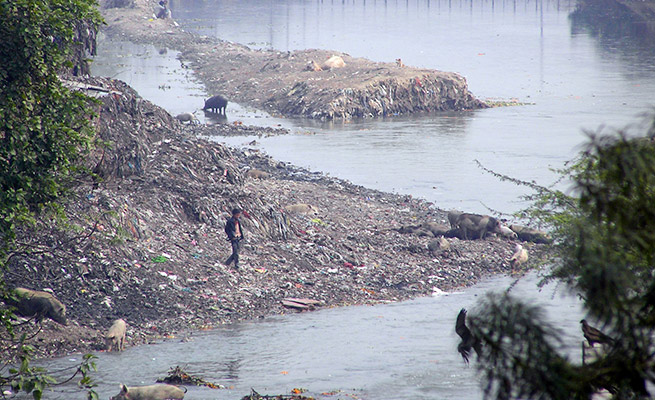With urban flooding becoming a commonplace occurrence worldwide many citizens ask themselves ‘Why is it happening – and can’t something be done’? Climate change and increasing urbanization and their effects are discussed globally along with mitigation measures and better ways of managing floods.
The reasons for floods are many, but for the cities that are rapidly increasing in size and population, one of the major reasons is that the drainage systems are not developing at the same pace. Delhi is the ninth largest city in the world and is characterized by an ever increasing urbanization which translates into increasing impervious areas and decrease in the capacity of the existing drainage system.
Looking at Delhi in specific, the drainage system consists of 1550 km of storm drain system that is insufficient to keep up with the rapid urbanization that Delhi has been experiencing since 1990s. The problem is exacerbated by more than 0.5 million m3 of silt that accumulates in the drainage system and needs to be removed. Further, encroachments on drains and dumping of solid waste (including plastics) in the drains make it difficult to maintain the optimum capacity of the drainage system. Apart from this, nearly 50% of Delhi’s sewage and unregulated effluents from industries flow into the storm drains of Delhi.

Dumping of Garbage in Nazafgarh Drain
So, when very heavy rain hits Delhi, the result is flooding. The good news is that there are ways to address the challenges. One of the first steps is development of a drainage master plan. In such a study one can use state-of-the-art numerical models to understand the impacts of floods in different areas and also investigate mitigation measures and the efficiency of these measures. MIKE URBAN (a modelling tool for collection systems. i.e. both storm water and waste water systems) can be combined with MIKE FLOOD for creating a flood model that incorporates the interaction between the drainage system and the surface. The flood study of the areas will then allow to come up with suggestions for improved designs of a more efficient drainage system. It will also enable the conceptualization of scientifically designed silt management policies in the remodeled drainage network. In addition to the more traditional technical solutions like improved box drains and holding ponds, green infrastructure elements like parks and other green areas can also be used as a part of an overall drainage plan. Green solutions provide added benefits to the communities and neighborhoods by having attractive planting features and increased biodiversity.
A numerical model with a true representation of the system linked with real time and forecasted data on precipitation also makes it possible to take preventive actions in case of an impending flood event.
However, application of latest technology alone cannot solve all of Delhi’s (and other cities) drainage problems. It needs to be supported by regulation of sewage and effluent flow, dumping of solid waste etc.
If you are keen to learn more about possible solutions to your challenges – let us know!